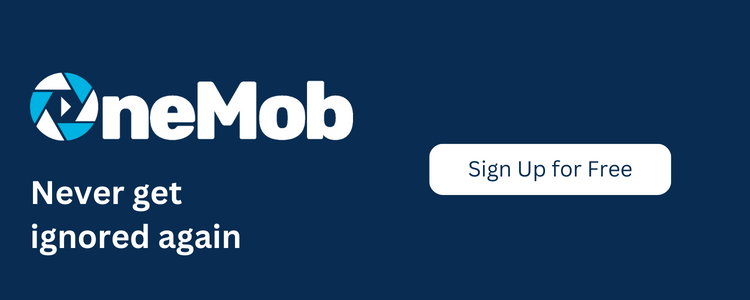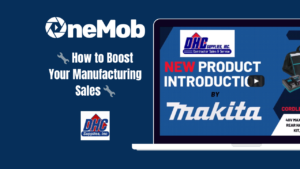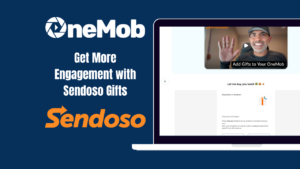Section 1: How to Qualify Inbound Leads
Sub-section 1.1: Understanding Inbound Leads
Before diving into how to qualify inbound leads, it’s important to understand what they are. Inbound leads are prospects who have shown interest in your product or service by reaching out to you directly. They could have filled out a contact form on your website, sent an email inquiry, or engaged with your company through social media.
Inbound leads are valuable because they have already expressed interest in your offering, which means they are further along in the buyer’s journey compared to outbound leads. However, not all inbound leads are created equal. Some may be more qualified than others, and it’s crucial to identify which ones are most likely to convert into customers.
Sub-section 1.2: Qualifying Inbound Leads
Qualifying inbound leads involves evaluating their fit and interest level to determine their readiness to make a purchase. By effectively qualifying leads, sales teams can prioritize their efforts and focus on the prospects with the highest potential for conversion.
Here are some key steps to consider when qualifying inbound leads:
- Gather Relevant Information: Start by collecting essential information about the lead, such as their name, contact details, company name, and any specific challenges they are facing. This information will help you tailor your approach and identify potential pain points that your product or service can address.
- Determine Fit: Assess how well the lead aligns with your target customer profile. Consider factors such as industry, company size, job title, and budget. If the lead doesn’t match your ideal customer persona, it may not be worth investing significant time and resources into pursuing the opportunity.
- Evaluate Interest Level: Gauge the lead’s level of interest in your offering. Look for indications of engagement, such as their interaction with your website, downloads of gated content, or attendance at webinars or events. A lead that has shown active engagement is more likely to be interested in moving forward with a purchase.
- Qualify Decision-Maker: Determine if the lead has the authority to make purchasing decisions or if they need to involve other stakeholders. Engaging with decision-makers directly increases the chances of closing a deal successfully.
By following these steps, you can effectively qualify inbound leads and focus your efforts on those with the highest potential for conversion. Remember that not all leads will be a good fit for your product or service, so it’s important to prioritize your efforts and allocate resources wisely.

Section 2: How to Qualify Inbound Leads
Sub-section 2.1: Understanding Inbound Leads
Inbound leads refer to potential customers who have shown interest in your product or service by initiating contact with your company. These leads can come from various sources such as website forms, email inquiries, social media messages, or phone calls. Unlike outbound leads, which are generated through proactive sales efforts, inbound leads are more likely to convert into customers as they have already expressed some level of interest in your offering.
Sub-section 2.2: The Importance of Qualifying Inbound Leads
Qualifying inbound leads is crucial for optimizing your sales efforts and maximizing conversion rates. By thoroughly evaluating each lead, you can identify the most promising prospects and prioritize your sales activities accordingly. Qualification helps you determine if the lead fits your target customer profile, has a genuine need for your product or service, and has the budget and authority to make purchasing decisions. This process ensures that you invest your time and resources in leads that have a higher probability of converting into paying customers.
Sub-section 2.3: Qualifying Inbound Leads: Best Practices
When it comes to qualifying inbound leads, there are several best practices to follow:
- Establish clear qualification criteria: Define the characteristics and requirements of an ideal customer for your business. This may include factors such as industry, company size, geographic location, job title, and specific pain points that your product or service can address.
- Ask the right questions: During initial contact with the lead, gather relevant information to assess their fit and interest level. Ask questions about their current challenges, goals, budget, timeline, and decision-making process to determine if they align with your offering.
- Score leads based on qualification criteria: Develop a lead scoring system that assigns points to different qualification criteria. This allows you to prioritize leads based on their likelihood of conversion. For example, a lead from a company in your target industry with a high budget and urgent need may receive a higher score.
- Collaborate with marketing: Work closely with your marketing team to align on lead qualification criteria and ensure a seamless handoff between marketing and sales. Marketing can provide valuable insights into lead behavior, engagement, and source attribution, which can further inform the qualification process.
- Use automation and technology: Leverage CRM (Customer Relationship Management) software and automation tools to streamline the lead qualification process. These tools can help track and manage lead interactions, automate follow-ups, and ensure consistent and efficient lead scoring.
- Continuously refine your qualification process: Regularly review and update your qualification criteria based on feedback from your sales team and the results of your lead conversion analysis. Fine-tuning your qualification process over time can significantly improve your conversion rates.
By implementing these best practices, you can effectively qualify your inbound leads and focus your sales efforts on the most promising opportunities. Remember that qualification is an ongoing process, and it’s important to adapt and refine your approach as your business and target market evolve.
Section 3: How to Qualify Inbound Leads
Sub-section 3.1: Understanding Inbound Leads
When it comes to lead generation, inbound leads hold a special place in the sales process. These leads are potential customers who have proactively expressed interest in your product or service. They may have filled out a contact form on your website, downloaded a whitepaper, or subscribed to your newsletter. The key to successfully qualifying inbound leads is understanding their intent and level of interest.
One important aspect to consider when qualifying inbound leads is the source of the lead. Leads that come from high-quality sources, such as industry-specific events or targeted marketing campaigns, are more likely to be qualified and have a higher conversion rate. On the other hand, leads from generic sources or purchased lists may require additional scrutiny to ensure they meet the criteria for qualification.
Sub-section 3.2: Initial Lead Qualification
The first step in qualifying inbound leads is to gather as much information as possible about the lead. This includes their contact details, company name, job title, and any additional information they provided on the lead form. By analyzing this information, you can determine whether the lead fits your target customer profile and if they have the potential to become a valuable customer.
Another important aspect of initial lead qualification is assessing their level of engagement. Did they simply download a free resource or did they request a demo or pricing information? The more engaged the lead is, the higher their likelihood of converting into a customer. Look for signs of active interest, such as multiple interactions with your website or engagement with your marketing materials.
Sub-section 3.3: Engaging with Inbound Leads
Once you have gathered the necessary information and assessed their level of engagement, it’s time to engage with the inbound leads. Personalization is key in this stage. Tailor your communication to address their specific needs and pain points. Use the information you collected to highlight how your product or service can solve their challenges.
It’s also important to prioritize your leads based on their level of interest and potential value. Focus your efforts on the leads that are most likely to convert into customers. Implement lead scoring methodologies to assign scores based on factors such as lead source, engagement level, and fit with your target customer profile. This will help you allocate your resources effectively and prioritize your follow-up activities.
Sub-section 3.4: Nurturing Inbound Leads
Not all inbound leads are ready to make an immediate purchase. Some may require additional nurturing to build trust and establish a relationship before they are ready to move forward. Lead nurturing involves providing valuable content and resources to educate the lead and keep them engaged with your brand. This can be done through email marketing campaigns, personalized follow-ups, and targeted content offers.
By nurturing inbound leads, you can stay top-of-mind and position yourself as a trusted advisor. Provide them with relevant information, industry insights, and success stories that demonstrate the value of your product or service. This will help build credibility and keep the lead engaged until they are ready to take the next step in the buying process.








